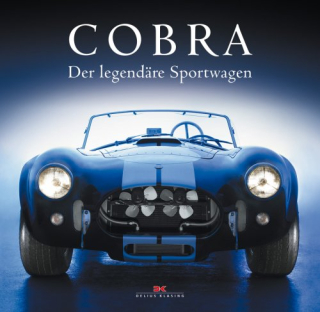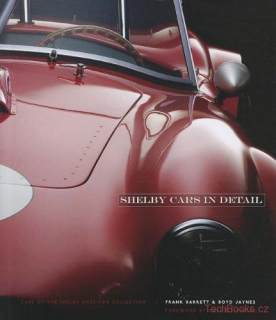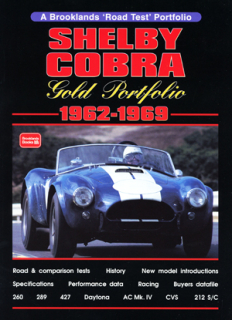Úvod »Automobily nákladní a tahače»Škoda » AC & Cobra 1962-2011
Anotace
The Cobra was Carroll Shelby's brainchild. The 1959 Le Mans winner held an ambition to build such a car, and was seeking out opportunities. In 1961 the Chevrolet Corvette gave GM a distinct sporting image and Ford were looking to do likewise, through what became the Total Performance racing programme. This included getting track success with their new thin-wall lightweight V8 as well as their Indy engine programme, barely underway, and the later Cosworth F1 engine. What Ford needed, and quickly, was an agile chassis and race support. In England, AC had a great handling car that had swept all before it in the USA. When Carroll Shelby called Thames Ditton in 1961, he had already secured promises of the Ford V8s and finance for racing. AC, Shelby and Ford were soon in business.
Driven by racing, the Cobra's development was rapid. The model was homologated by the FIA as Shelby American, the engine was soon increased to 4.7 litres and the steering modified to rack and pinion. On the track, three US National Championships were secured in 1963, but success at International level did not come so easily. High-speed aerodynamics were poor even with a streamlined hard top, the handling something of a challenge, and there were the inevitable teething problems. By the start of the 1964 season Pete Brock's Shelby Daytona Coupé, then allowed by the regulations, had resolved the aerodynamic issue for racing. Shelby mounted a serious attempt at the FIA World Championship, with strong support from UK teams including Willment Racing and AC Cars. But, success again eluded the Cobra, with an SCCA Class Championship as consolation. Sadly, AC's superb A98 Le Mans Coupé was ill-fated, but not before AC had achieved a great deal of publicity and some notoriety by testing the car on the London – Birmingham Motorway one quiet Sunday morning at 185 mph!
AC car production had been at a virtual standstill for ten years, and the Company were totally reliant on other products to fund new car development. The main income stream was from invalid carriages, the first versions of which dated back to 1948. But, these were now subject to public criticism. In 1976 AC were surprised to be informed by the Department of Health that production would cease in March 1978. With the Town Car project discontinued by the Company, profitable production of the 3-Litre suddenly became crucial to AC Cars survival. The Company persevered, and after a number of changes to the model name, the first AC 3000ME was delivered towards the end of 1978, a LHD car destined for the Belgian agent.
The Company celebrated its centenary in 2001 with great hopes for the future. But demand did not take off as hoped. Whilst the Cobra Mk IV CRS was well received and found a steady line of customers, the much higher priced Superblower sold slowly. The revised Ace received mixed reviews, and the Aceca, Lotus-engined cars and Mamba did not reach production despite considerable effort and expenditure on development. By 2004, production of the Ace had ceased. Production of bare body/chassis units for a number of aluminium continuation cars, being made under contract to Shelby, was transferred to a small industrial unit near Guildford, and the equipment for manufacturing carbon fibre cars was moved to Malta. Establishing production there with a new workforce was a difficult undertaking. Only a handful of AC Mk Vs were made before that factory was closed, and was superseded by the AC MK VI announced in 2009 and before it went into production was updated in April 2011. A total of 190 fully illustrated pages.





























